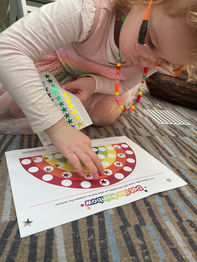Types of therapy
Learn to Play is a program developed by Play Therapist, Occupational Therapist, and Professor Karen Stagnitti. It was designed not only to develop imaginative play skills but to foster the spontaneity in children to initiate such play. This program is designed for children who find difficulty in playing with toys, peers, and objects, between 18 months and 10 years. Learn to play focuses on a set of six play skills: logical sequencing of play actions; integrating a clear script into the play; the substitution of objects to be used for an alternate purpose; role play; social interaction; and spontaneous initiation of play. Within the learn to play program the therapist’s job is to nurture the child’s innate need to play by creating a safe and inviting environment in which to do it.
Learn to Play is a directive approach to Play Therapy, meaning the therapist helps to steer the sessions in the direction that will engage the child and aid their ability to grow. Though ultimately, through conducting Learn to Play sessions with a child they will develop the ability to initiate the play themselves. By recognising the skills a child has, the therapist can prepare activities aimed to enhance specific skills whilst keeping the child within their Zone of Proximal Development. The Zone of Proximal Development is the optimal space in which a child can learn, steering clear of already mastered activities or developmentally unachievable activities in which the child cannot learn within.
For therapists or parents, the importance of awareness is vital. Not only awareness of the child but awareness of oneself. One must always be aware of their own thoughts and feelings as well as the children’s, in order to achieve growth. Awareness enhances one’s ability to adapt the activity or environment to remain within the Zone of Proximal Developmental and maintain the child’s engagement. If a child is not engaged both physically and emotionally they will struggle to learn, and perceiving the therapist or parent to be absent whether physically or emotionally the child will not feel encouraged to participate.
Humanistic Play Therapy is a form of non-directive Play Therapy that “embraces a belief that children can grow and heal when a growth-producing climate is provided for them, free from agenda and constriction”
(Charles E. Schaefer)
Play Therapists will create a warm and safe environment that enables the child to explore using toys to practise their own skills in a way that makes sense to them. Play often makes more sense to children and allows them to communicate in a way that they are often more comfortable with than verbalising.
Child-centred Play Therapy is a process of using empathy, attention (also known as tracking) and age-appropriate play that allow the child to heal and grow through their own play-based self-exploration. The easiest way to explain this process is to understand that it is adult-facilitated and child-lead (Cochran Nordlin and Cochran. 2020). Too are carefully selected allowing the child to express what they are feeling with or without words. This process isn't just play. The therapist uses well-defined skills that are consistent and predictable thus allowing the child to express their thoughts and emotions.








